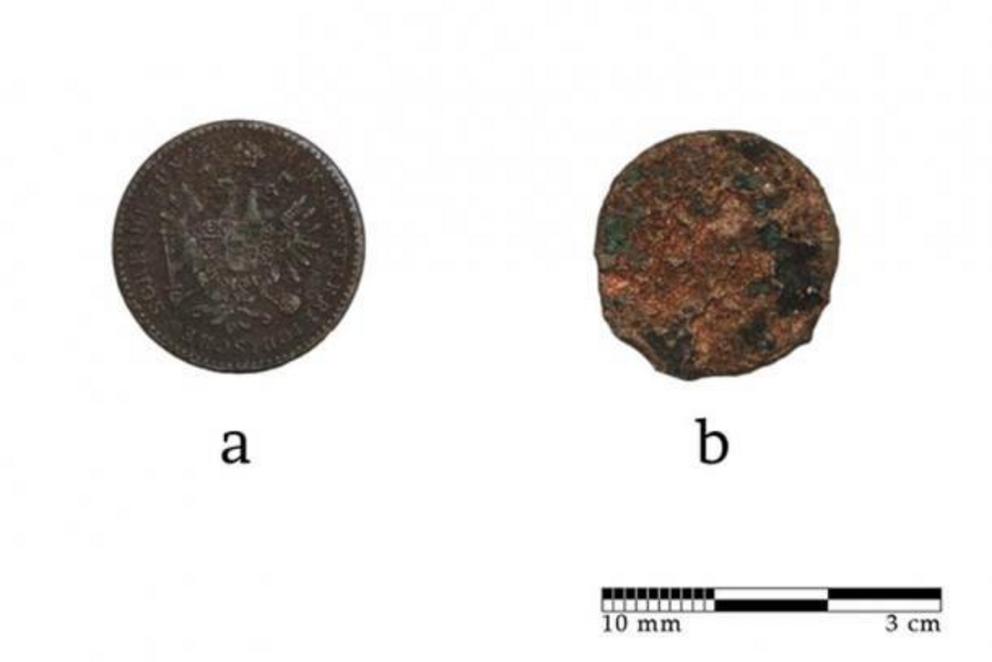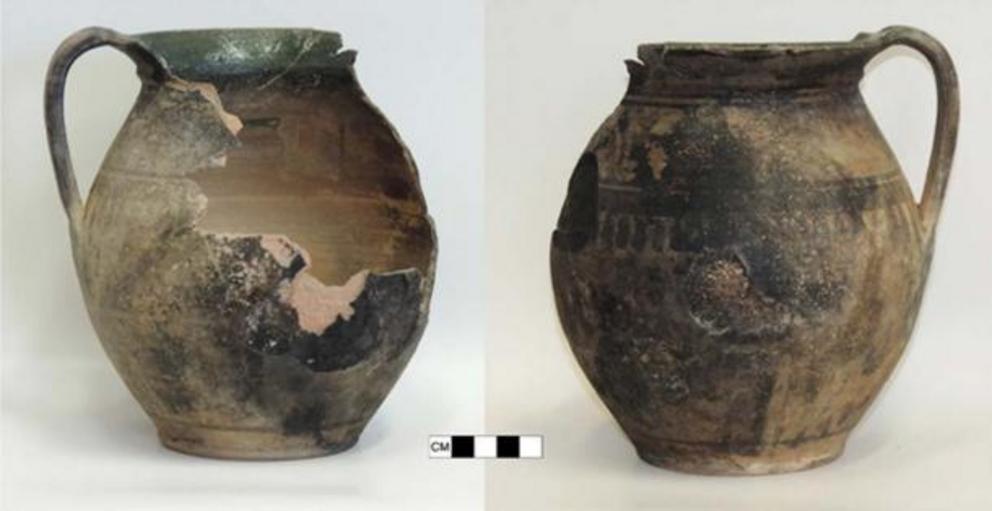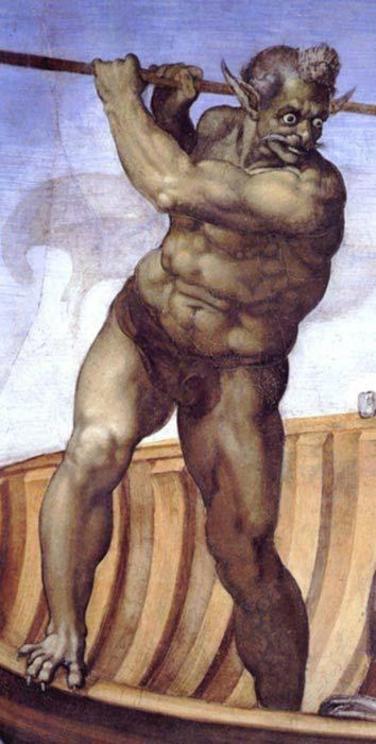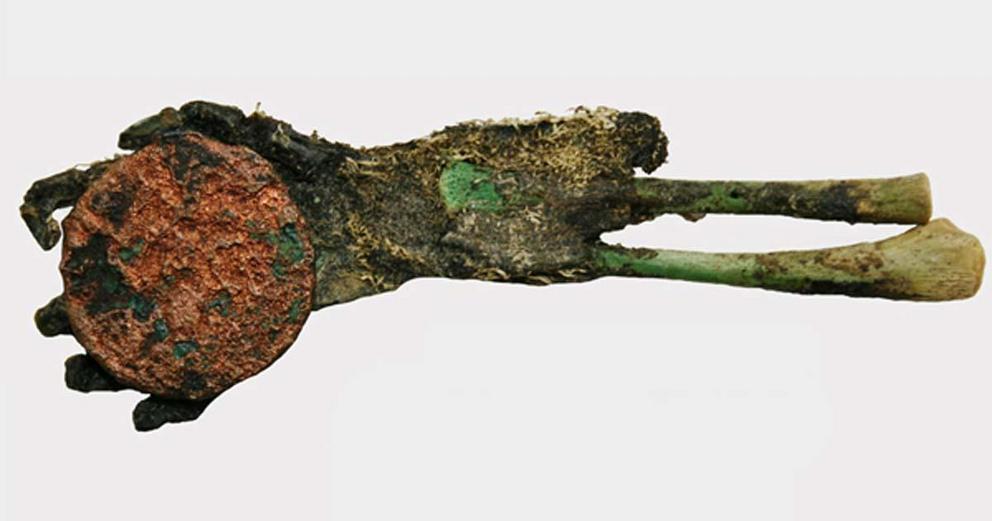Green-boned baby clasps a copper ticket to the afterlife
500 graves dated to between the 12th and 16th centuries were found in a cemetery at Nyárlőrinc, a village in southern Hungary. They contained a unique set of bones. In 2005, Dr. János Balázs, a biological anthropologist at the University of Szeged, and his colleague Zoltán Bölkei examined a storage box from the medieval dig and discovered “green mummified bones,” as they told reporters at the New York Times .
Now, 13 years later, Dr. Balázs and his colleagues might have discovered the story behind this perplexing find. In last month’s journal of Archaeological and Anthropological Sciences they provided new evidence of a hitherto unknown form of mummification.
Measuring only 11 to 13 inches (27.94-33.02 cm) and weighing only one or two pounds (0.45-0.91 kg.), Dr. Balázs determined the deceased child was either stillborn or premature and he found “a hip bone, forearms and leg bones were colored green” while “most of the ribs, a shoulder bone and two humerus bones were not discolored”, according to the Archaeological and Anthropological Sciences report.

The remains of the deceased child. ( János Balázs/Department of Biological Anthropology, University of Szeged )
When the words “green” and “bones” are brought together they bring several dark and mysterious allusions, yet green bones are not uncommon archaeological finds at burial sites. The green coloration is generally caused by ritually interred copper and bronze grave deposits - which often discolor degrading bones. Dr. Balázs suspected that the child’s body must have come in contact with either copper or bronze and a chemical analysis on the bones found copper levels ‘hundreds of times more than average” according to the New York Times reporters. Talking about this, Dr. Balázs added that the copper levels were “the highest ever seen in a mummy.”
“We started to see the actual story unfold” said Dr. Bereczki , talking of the exciting moment when they examined a second storage box from the same dig, which was being kept at a nearby museum. They found a “small ceramic pot and a corroded copper coin” in it - leading the team of scientists to conclude that someone had put the copper coin into the child’s hand before it was buried. The copper’s antimicrobial properties must have protected the child’s hand from decaying and this has become the first reported case of “copper-driven mummification.”

The Copper coin which turned some of the baby’s bones green. ( János Balázs )
Now that it is understood “why” the child’s hand was preserved and had green bones, the question “why” it was grasping a copper coin is much harder to answer with any degree of certainty. So many different religions and cults buried their dead with coins, supporting a wide array of beliefs. And, even within one religion, practitioners of rituals might hold different beliefs about their original meaning and purpose.
The copper coin found with this particular baby is known as a “Kreuzer” or “krajcár” and although it was found among medieval graves, it was coined between 1858 and 1862. At this time Christians were not known to have buried deceased folk with coins and speculating as to why this particular baby was buried with a coin, Dr. Balázs and Dr. Bereczki suggested that the child died either just before or immediately after it was born, therefore it was most likely not baptized, and whoever buried the child might have hoped the coin would assist the unbaptized child in the afterlife.

The infant with green bones was buried in a ceramic pot buried at the edge of the cemetery. ( János Balázs )
To find the actual origins of the coin burial ritual we must look to ancient Greek literary mythology, in which Charon's Obol was the name of the coin placed in the mouth of a dead person, just before burial. Charon (Kharon) was the mythical ferryman of Hades (the god of the underworld), who was believed to have been responsible for carrying the souls of the deceased over the river separating the worlds of the living and the dead. Coins were placed in the mouth or on the eyes of corpses to pay Charon for transportation. If, however, the traveling soul was unable to pay Charon then it was left stranded between the two worlds.

Charon as depicted by Michelangelo in his fresco The Last Judgment in the Sistine Chapel. ( Public Domain )
Coins being added to burials has evolved from the ancient world and in modern times we see several applications. During the Vietnam war, leaving a penny on a soldier’s grave meant thanking the veteran for their service while a nickel meant you trained together at boot camp. A dime meant you served with him or her, and finally, a quarter signified you were with the deceased soldier when they died.
With so many different beliefs associated with coins and burials, trying to establish the actual reason, or motivation for this child holding a copper coin will never be anything more than a good guess.
But what is a certainty, is that the person who cared for the deceased child loved it so deeply that they took the time to bury it with respect and dignity - and it is evident that they did everything in their power to assist the safe passage of the baby’s soul in “an” afterlife, no matter how we each choose to describe it.

The baby had been partially mummified and had green bones due to copper from a coin placed in its hand. Source: János Balázs/Archaeological and Anthropological Sciences
For the rest of this article please go to source link below.
For full references please use source link below.
